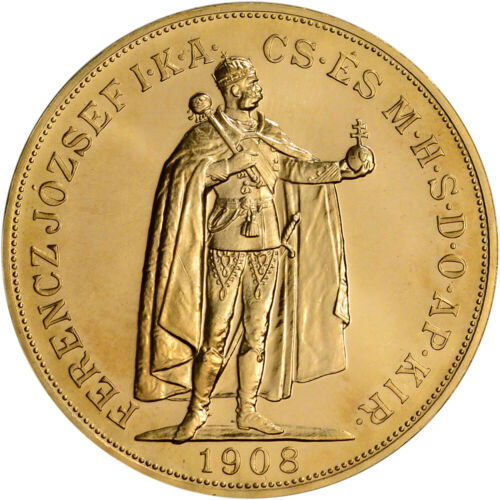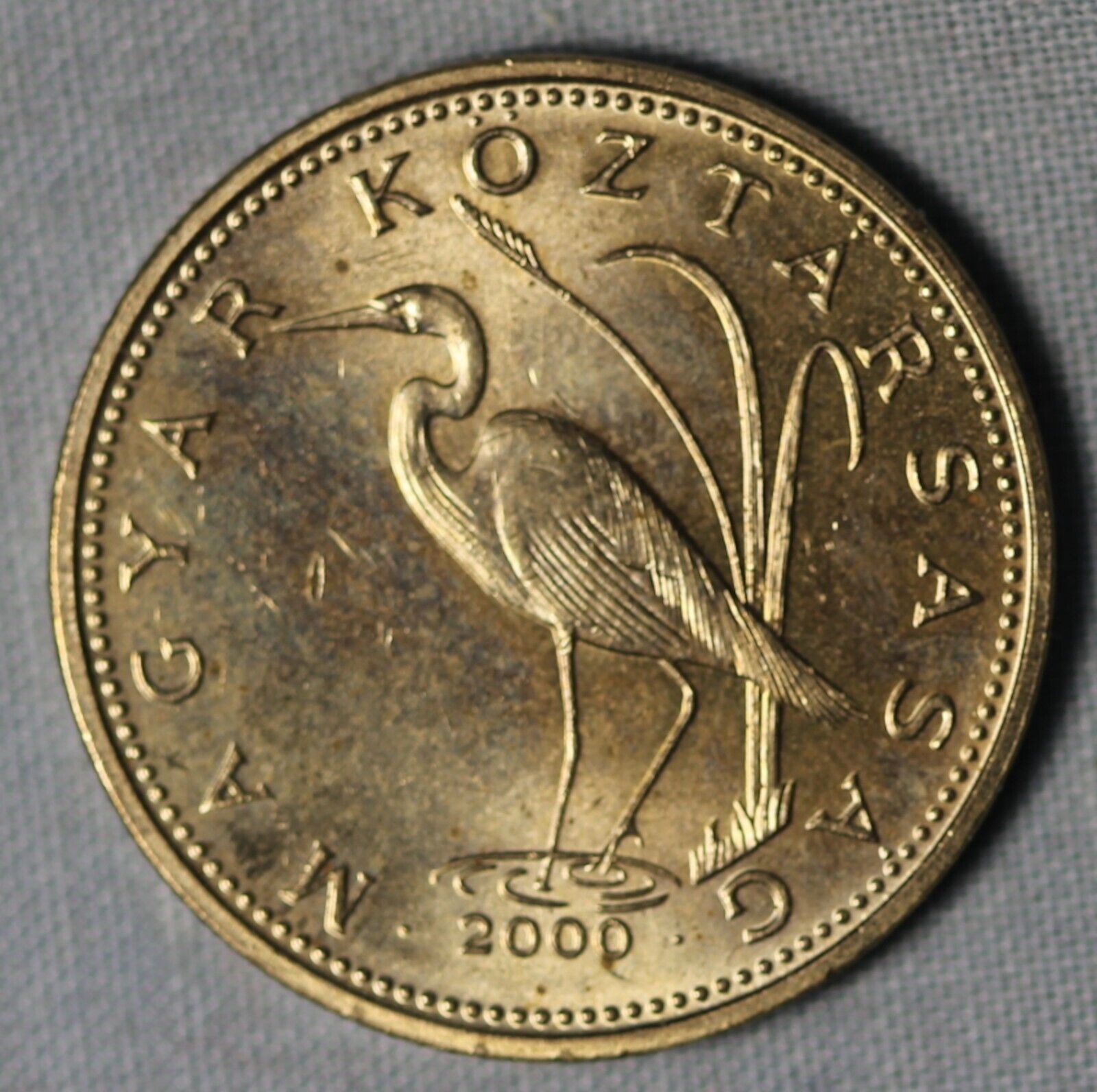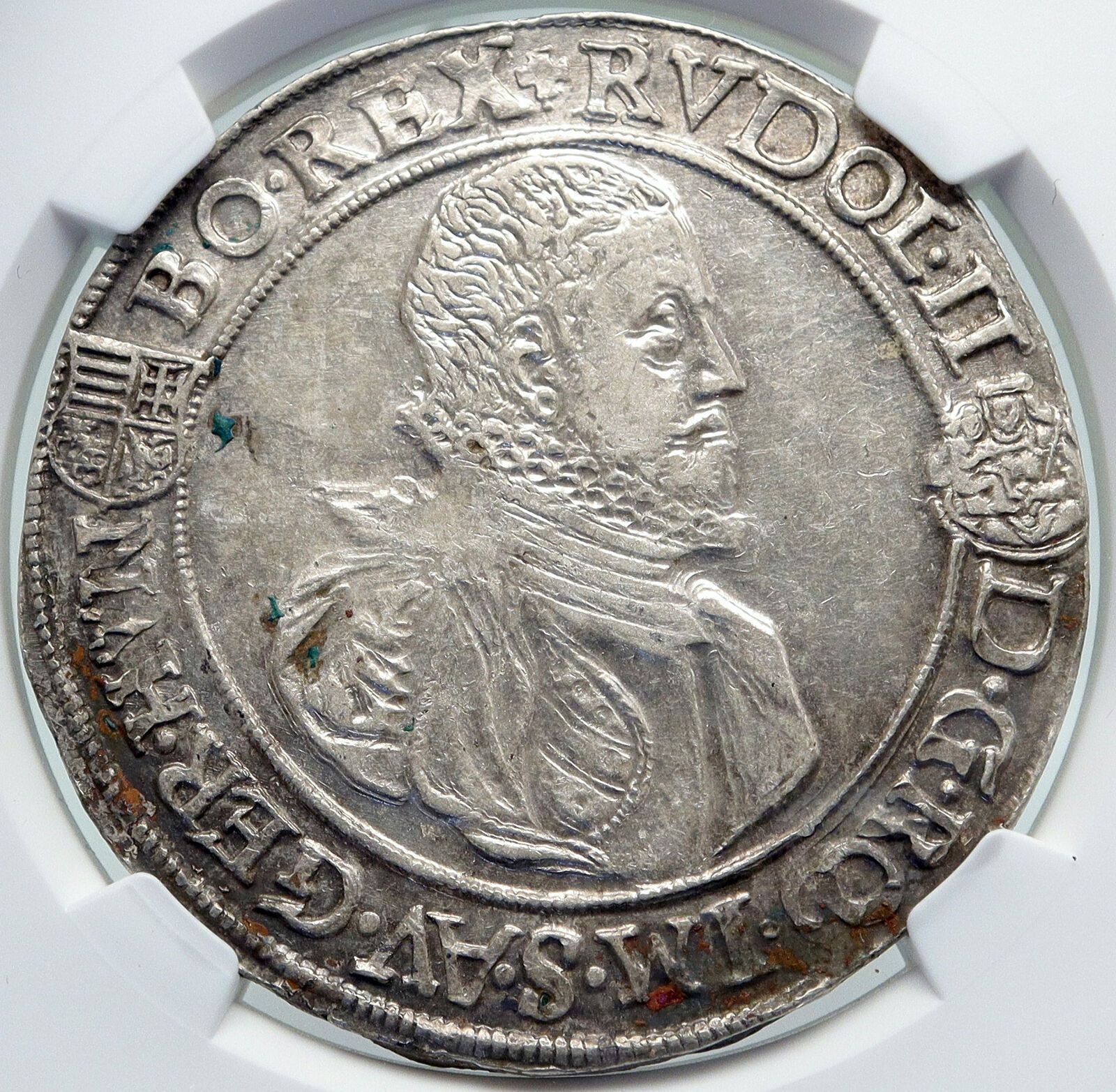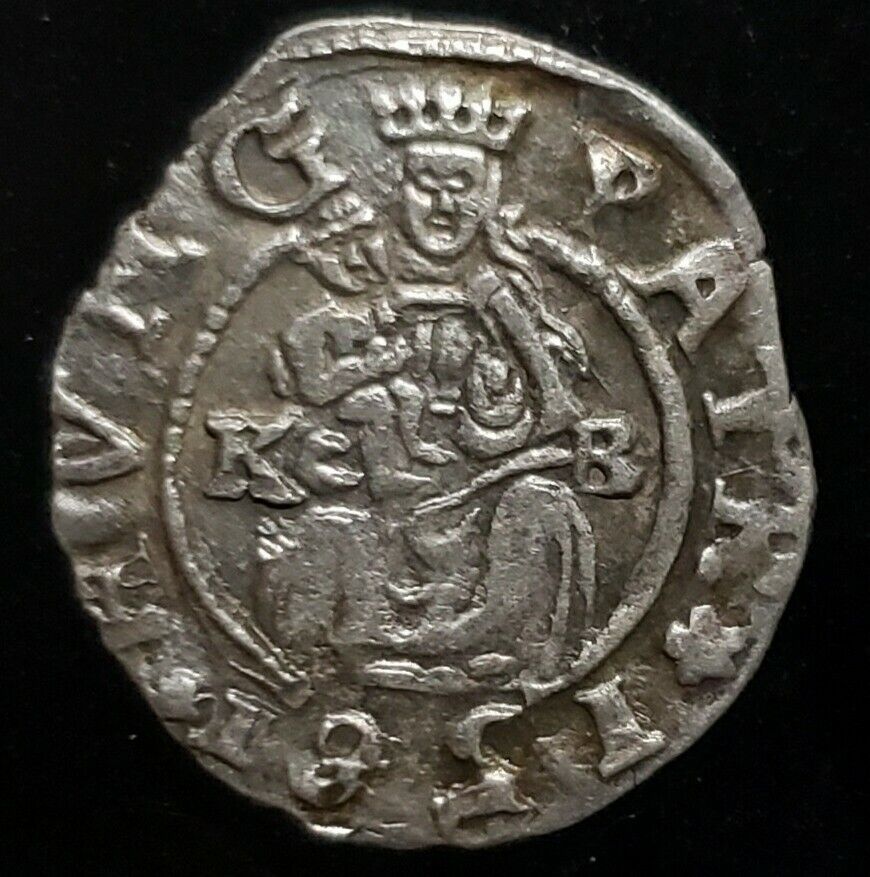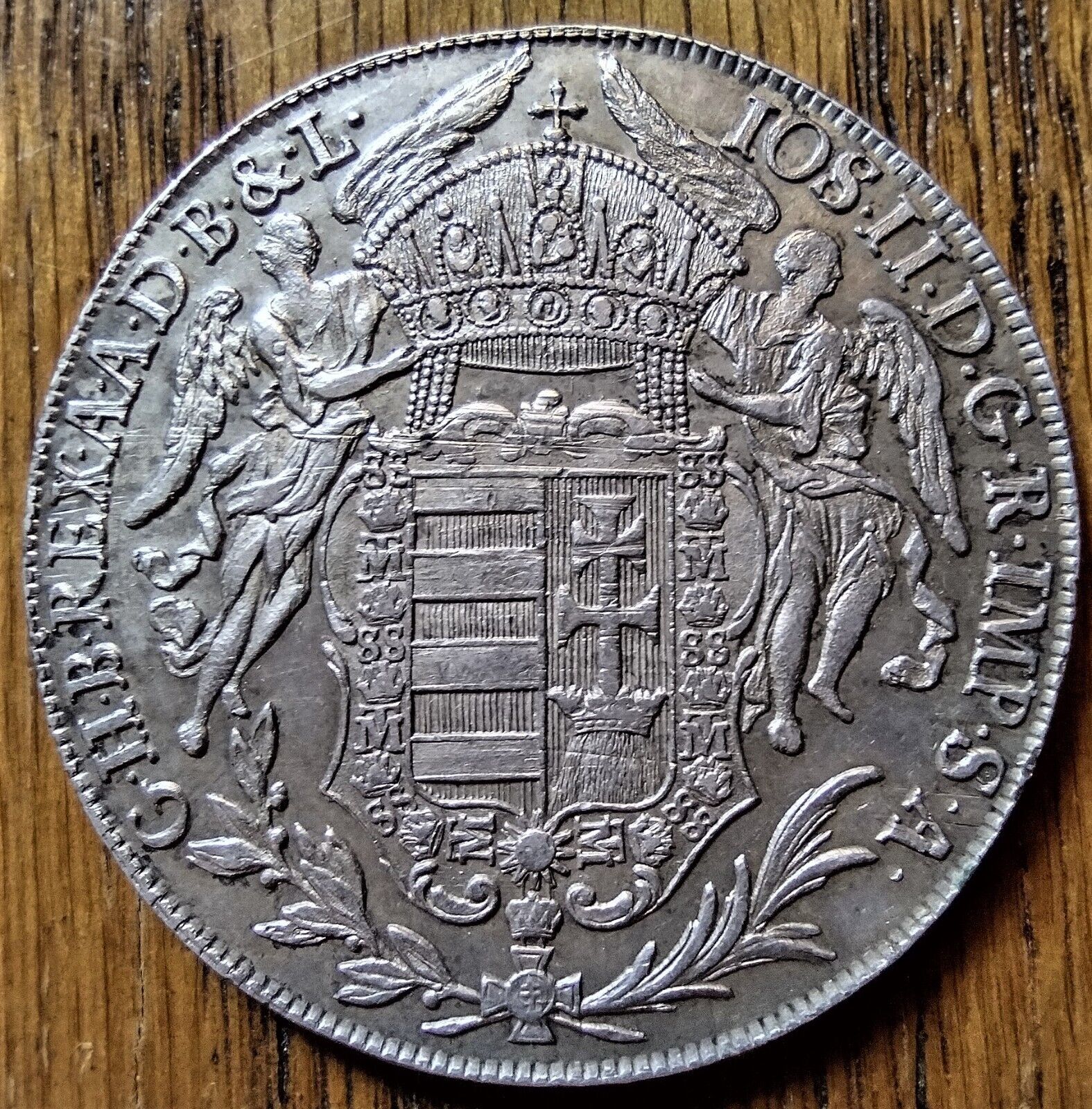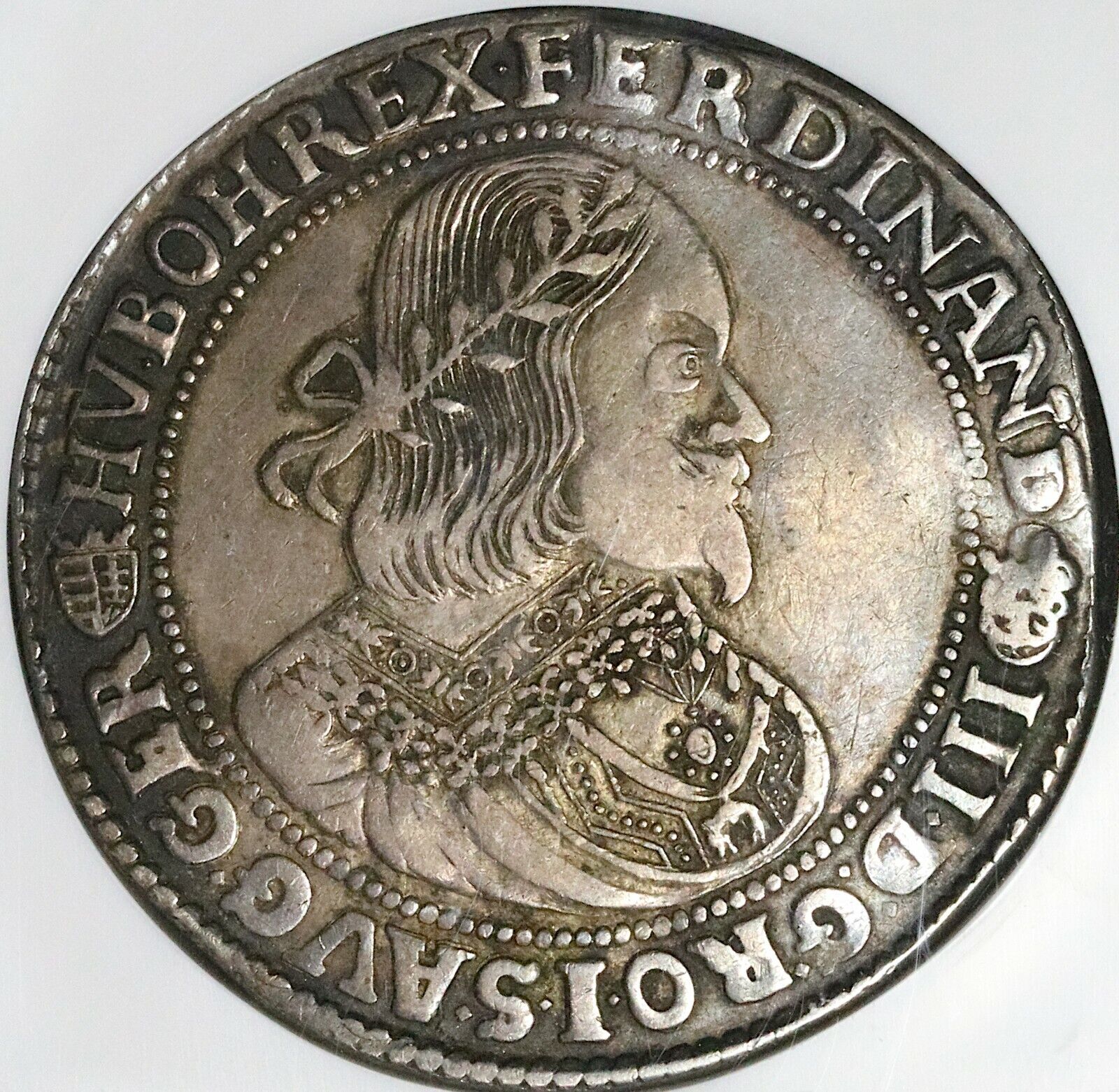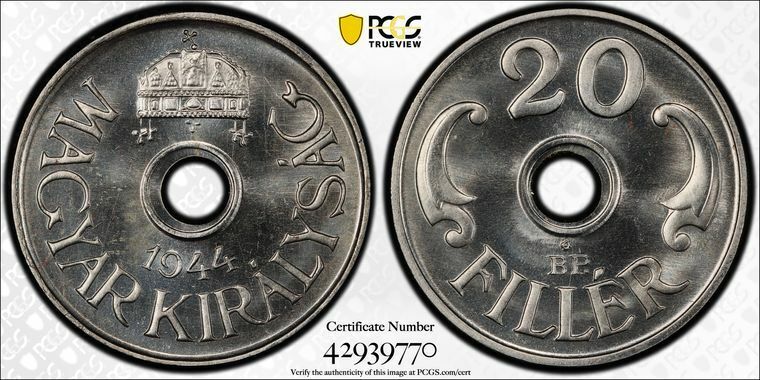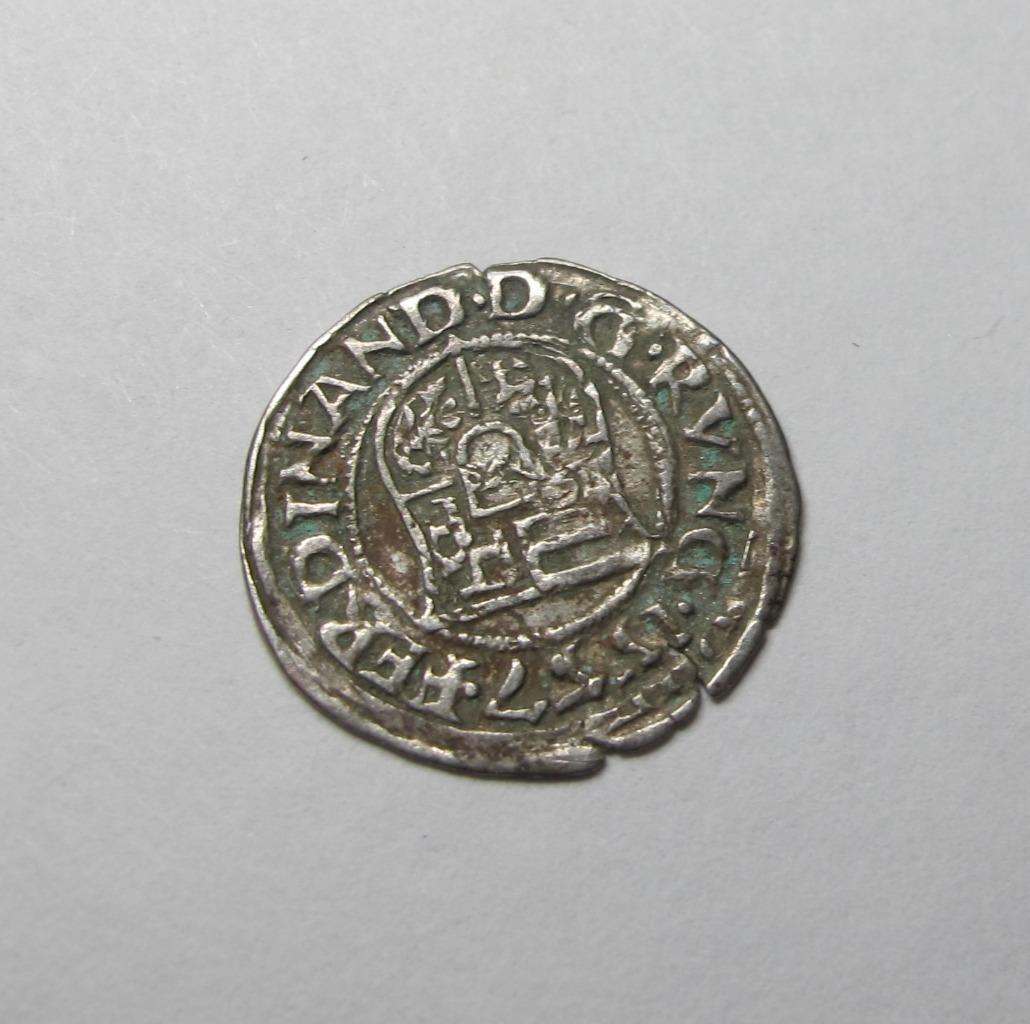-40%
Rare genuine antique Silver Coin Madonna with Child Rudolf II 1585 Hungary Denar
$ 7.91
- Description
- Size Guide
Description
One original antique Silver Coin of:Hungary
under Rudolf II - Holy Roman Emperor: 12 October 1576 - 20 January 1612
1585 KB Silver Denar 12-13mm (0.45) 0.500 Silver
Reference: ÉH# 811, H# 1059, H# 1062, MB# 260, H# 1055 (1579-1602)
Obv./ RVD•II•RO•I•S•AV•G•H•B•R•, Hungarian Coat-of-arms: Hungarian Árpád stripes, Hungarian double cross, Dalmatian leopard heads, Bohemian lion; on the center chest shield: Austrian bonds.
Rev./ PATR ¤ 1596 ¤ HVNG , Crowned Madonna, with child on her right.
Coin is in good condition and very rare and nice inclusion to the finest collection.
Authenticity guaranteed!!
Rudolf II
(18 July 1552 - 20 January 1612) was Holy Roman Emperor (1576-1612), King of Hungary and Croatia (as
Rudolf I
, 1572-1608), King of Bohemia (1575-1608/1611) and Archduke of Austria (1576-1608). He was a member of the House of Habsburg.
Rudolf's legacy has traditionally been viewed in three ways: an ineffectual ruler whose mistakes led directly to the Thirty Years' War; a great and influential patron of Northern Mannerist art; and an intellectual devotee of occult arts and learning which helped seed what would be called the scientific revolution.
Coello.
Rudolf was born in Vienna on 18 July 1552. He was the eldest son and successor of Maximilian II, Holy Roman Emperor, King of Bohemia, and King of Hungary and Croatia; his mother was Maria of Spain, a daughter of Charles V and Isabella of Portugal. He was the elder brother of Matthias who was to succeed him as king of Bohemia and Holy Roman Emperor.
Rudolf spent eight formative years, from age 11 to 19 (1563-1571), in Spain, at the court of his maternal uncle Philip II, together with his younger brother Ernest, future governor of the Low Countries. After his return to Vienna, his father was concerned about Rudolf's aloof and stiff manner, typical of the more conservative Spanish court, rather than the more relaxed and open Austrian court; but his Spanish mother saw in him courtliness and refinement. In the years following his return to Vienna, Rudolf was crowned King of Hungary (1572), King of Bohemia and King of the Romans (1575) when his father was still alive.
Rudolf would remain for the rest of his life reserved, secretive, and largely a recluse who did not like to travel or even partake in the daily affairs of state. He was more intrigued by occult learning such as astrology and alchemy, which was mainstream in the Renaissance period, and had a wide variety of personal hobbies such as horses, clocks, collecting rarities, and being a patron of the arts. He suffered from periodic bouts of "melancholy" (depression), which was common in the Habsburg line. These became worse with age, and were manifested by a withdrawal from the world and its affairs into his private interests.
Like Elizabeth I of England (who was born 19 years before he was), Rudolf dangled himself as a prize in a string of diplomatic negotiations for marriages, but never in fact married. During his periods of self-imposed isolation, Rudolf reportedly had affairs with his court chamberlain, Wolfgang von Rumpf, and a series of valets. One of these, Philip Lang, ruled him for years and was hated by those seeking favour with the emperor.
In addition, Rudolf was known to have had a succession of affairs with women, some of whom claimed to have been impregnated by him. He had several illegitimate children with his mistress Catherina Strada. Their eldest son, Don Julius Caesar d'Austria, was likely born between 1584 and 1586 and received an education and opportunities for political and social prominence from his father. In 1607, Rudolf sent Julius to live at Český Krumlov in Bohemia (in what is now the Czech Republic), a castle which Rudolf purchased from Peter Vok/Wok von Rosenberg, the last of the House of Rosenberg, after he fell into financial ruin. Julius lived at Český Krumlov when in 1608 he reportedly abused and murdered the daughter of a local barber, who had been living in the castle, and then disfigured her body. Rudolf condemned his son's act and suggested that he should be imprisoned for the rest of his life. However, Julius died in 1609 after showing signs of schizophrenia, refusing to bathe, and living in squalor; his death was apparently caused by an ulcer that ruptured.
Many artworks commissioned by Rudolf are unusually erotic. The emperor was the subject of a whispering campaign by his enemies in his family and the Catholic Church in the years before he was deposed. Sexual allegations may well have formed a part of the campaign against him.
Reign
Rudolf succeeded his father Maximilian II on 12 October 1576. In 1583 he moved the court to Prague.
Historians have traditionally blamed Rudolf's preoccupation with the arts, occult sciences, and other personal interests as the reason for the political disasters of his reign. More recently historians have re-evaluated this view and see his patronage of the arts and occult sciences as a triumph and key part of the Renaissance, while his political failures are seen as a legitimate attempt to create a unified Christian empire, which was undermined by the realities of religious, political and intellectual disintegrations of the time.
Although raised in his uncle's Catholic court in Spain, Rudolf was tolerant of Protestantism and other religions including Judaism. He largely withdrew from Catholic observances, even in death refusing the last sacramental rites. He had little attachment to Protestants either, except as counter-weight to papal policies. He put his primary support behind conciliarists, irenicists and humanists. When the papacy instigated the Counter-Reformation, using agents sent to his court, Rudolf backed those whom he thought were the most neutral in the debate, not taking a side or trying to effect restraint, thus leading to political chaos and threatening to provoke civil war.
His conflict with the Ottoman Empire was the final cause of his undoing. Unwilling to compromise with the Turks, and stubbornly determined that he could unify all of Christendom with a new Crusade, he started a long and indecisive war with the Turks in 1593.
This war lasted till 1606, and was known as "The Long War". By 1604 his Hungarian subjects were exhausted by the war and revolted, led by Stephen Bocskay (Bocskai Uprising). In 1605 Rudolf was forced by his other family members to cede control of Hungarian affairs to his younger brother Archduke Matthias. By 1606 Matthias forged a difficult peace with the Hungarian rebels (Peace of Vienna) and the Turks (Peace of Zsitvatorok). Rudolf was angry with his brother's concessions, which he saw as giving away too much in order to further Matthias' hold on power. So Rudolf prepared to start a new war with the Turks. But Matthias rallied support from the disaffected Hungarians and forced Rudolf to cede the crowns of Hungary, Austria, and Moravia to him. At the same time, seeing a moment of royal weakness, Bohemian Protestants demanded greater religious liberty, which Rudolf granted in the
Letter of Majesty
in 1609. The Bohemians continued to press for further freedoms, and Rudolf used his army to repress them. The Bohemian Protestants then appealed to Matthias for help; Matthias' army then held Rudolf prisoner in his castle in Prague until 1611, when Rudolf ceded the crown of Bohemia to his brother.
Death
Rudolf died in 1612, nine months after he had been stripped of all effective power by his younger brother, except the empty title of Holy Roman Emperor, to which Matthias was elected five months later. In May 1618 with the event known as the Defenestration of Prague, the Protestant Bohemians, in defence of the rights granted them in the
Letter of Majesty
, threw imperial officials out of the window and thus the Thirty Years' War (1618-1648) started.
Art collecting and patronage
Rudolf moved the Habsburg capital from Vienna to Prague in 1583. Rudolf loved collecting paintings, and was often reported to sit and stare in rapture at a new work for hours on end. He spared no expense in acquiring great past masterworks, such as those of Dürer and Brueghel. He was also patron to some of the best contemporary artists, who mainly produced new works in the Northern Mannerist style, such as Bartholomeus Spranger, Hans von Aachen, Giambologna, Giuseppe Arcimboldo, Aegidius Sadeler, Roelant Savery, and Adrian de Vries, as well as commissioning works from Italians like Veronese. Rudolf's collections were the most impressive in the Europe of his day, and the greatest collection of Northern Mannerist art ever assembled. The adjective
Rudolfine
, as in "Rudolfine Mannerism" is often used in art history to describe the style of the art he patronized.
Rudolf's love of collecting went far beyond paintings and sculptures. He commissioned decorative objects of all kinds and in particular mechanical moving devices. Ceremonial swords and musical instruments, clocks, water works, astrolabes, compasses, telescopes and other scientific instruments, were all produced for him by some of the best craftsmen in Europe.
He patronized natural philosophers such as the botanist Charles de l'Ecluse, and the astronomers Tycho Brahe and Johannes Kepler both attended his court. Tycho Brahe developed the Rudolphine Tables (finished by Kepler, after Brahe's death), the first comprehensive table of data of the movements of the planets. As mentioned before, Rudolf also attracted some of the best scientific instrument makers of the time, such as Jost Bürgi, Erasmus Habermel and Hans Christoph Schissler. They had direct contact with the court astronomers and, through the financial support of the court, they were economically independent to develop scientific instruments and manufacturing techniques.
The poet Elizabeth Jane Weston, a writer of Renaissance Latin poetry, was also part of his court and wrote numerous odes to him.
Rudolf kept a menagerie of exotic animals, botanical gardens, and Europe's most extensive "cabinet of curiosities" (
Kunstkammer
) incorporating "the three kingdoms of nature and the works of man". It was housed at Prague Castle, where between 1587 and 1605 he built the northern wing to house his growing collections.
A lion and a tiger were allowed to roam the castle, documented by the account books which record compensation paid to survivors of attacks, or to family members of victims.
udolf was even alleged by one person to have owned the Voynich manuscript, a codex whose author and purpose, as well as the language and script and posited cipher remain unidentified to this day. According to hearsay passed on in a letter written by Johannes Marcus Marci in 1665, Rudolf was said to have acquired the manuscript at some unspecified time for 600 gold ducats. No evidence in support of this single piece of hearsay has ever been discovered. The Codex Gigas was also in his possessions.
As was typical of the time, Rudolf II had a portrait painted in the studio of the renowned Alonso Sanchez Coello. Completed in 1567, the portrait depicted Rudolf II at the age of 15. This painting can be seen at the Lobkowicz Palace in the Rozmberk room.
Occult sciences
Astrology and alchemy were regarded as mainstream scientific fields in Renaissance Prague, and Rudolf was a firm devotee of both. His lifelong quest was to find the Philosopher's Stone and Rudolf spared no expense in bringing Europe's best alchemists to court, such as Edward Kelley and John Dee. Rudolf even performed his own experiments in a private alchemy laboratory. When Rudolf was a prince, Nostradamus prepared a horoscope which was dedicated to him as 'Prince and King'. In the 1590s Sendivogius was active at Rudolph's court.
Rudolf gave Prague a mystical reputation that persists in part to this day, with Alchemists' Alley on the grounds of Prague Castle a popular visiting place and tourist attraction.
Rudolf is also the ruler in many of the legends of the Golem of Prague, either because of, or simply adding to, his occult reputation.
Hungary
is a sovereign state in Europe. It is situated in the Carpathian Basin and is bordered by Slovakia to the north, Romania to the east, Serbia to the south, Croatia to the southwest, Slovenia to the west, Austria to the northwest, and Ukraine to the northeast. The country's capital and largest city is Budapest. Hungary is a member of the European Union, NATO, the OECD, the Visegr? Group, and the Schengen Area. The official language is Hungarian, which is the most widely spoken non-Indo-European language in Europe.
Following centuries of successive habitation by Celts, Romans, Huns, Slavs, Gepids, and Avars, the foundation of Hungary was laid in the late 9th century by the Hungarian grand prince ?p? in the
Honfoglal?
("homeland-conquest"). His great-grandson Stephen I ascended to the throne in 1000 CE, converting the country to a Christian kingdom. By the 12th century, Hungary became a middle power within the Western world, reaching a golden age by the 15th century. Following the Battle of Moh?s in 1526 and about 150 years of partial Ottoman occupation (1541-1699), Hungary came under Habsburg rule, and later formed a significant part of the Austro-Hungarian Empire (1867-1918).
Hungary's current borders were first established by the Treaty of Trianon (1920) after World War I, when the country lost 71% of its territory, 58% of its population, and 32% of ethnic Hungarians. Following the interwar period, Hungary joined the Axis Powers in World War II, suffering significant damage and casualties. Hungary came under the influence of the Soviet Union, which contributed to the establishment of a four-decade-long communist dictatorship (1947-1989). The country gained widespread international attention regarding the Revolution of 1956 and the seminal opening of its previously-restricted border with Austria in 1989, which accelerated the collapse of the Eastern Bloc.
On 23 October 1989, Hungary again became a democratic parliamentary republic, and today has a high-income economy with a very high Human Development Index. Hungary is a popular tourist destination attracting 10.675 million tourists a year (2013). It is home to the largest thermal water cave system and the second-largest thermal lake in the world (Lake H??), the largest lake in Central Europe (Lake Balaton), and the largest natural grasslands in Europe (the Hortob?y National Park).
Please make your payments on time. Payment methods for USA buyers:< PAYPAL
Payment methods for International buyers - including Canada: PAYPAL contact us for more info.
Payments must be received within 7 days from the end of auction (14 days for international).
Please be sure to include item # & address with your payment. IF REQUESTING A CERTIFICATE PLEASE DO SO AT THE TIME OF PAYMENT.
Pay me securely with any major credit card through PayPal!
Items will be shipped within 1 to 3 business days of purchase completion.
FREE FIRST CLASS DOMESTIC SHIPPING.
INTERNATIONAL - .99
(REGISTERED-.00) WE COMBINE SHIPPING.
If you would like to have special shipping, please contact us.
All items will be sent out in protected envelope and boxed if necessary.
YOU ARE BIDDING ON AN ANCIENT ITEM(S) AS DESCRIBED AND PICTURED ABOVE!!!
Every item offered by cameleoncoins is unconditionally guaranteed to be genuine & authentic.
We can provide a certificate of authenticity or extended return policy by request only!!!
Please a short request with your payment if you would like a COA!!!
If in the unlikely event that an item is found to be reproduction, full return privileges are within 60 days of receiving the coins. We will promptly offer a full refund without hesitation or hassle.
Please read the auction page prior to contacting US.
6








